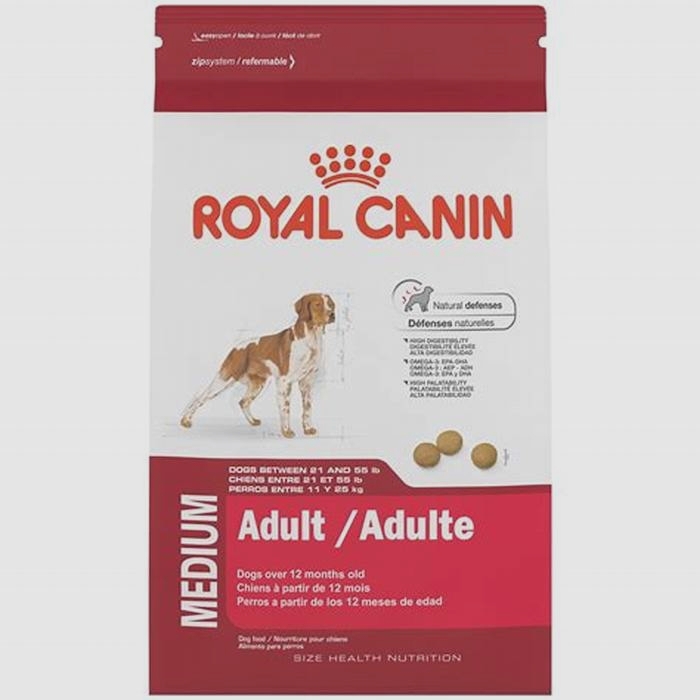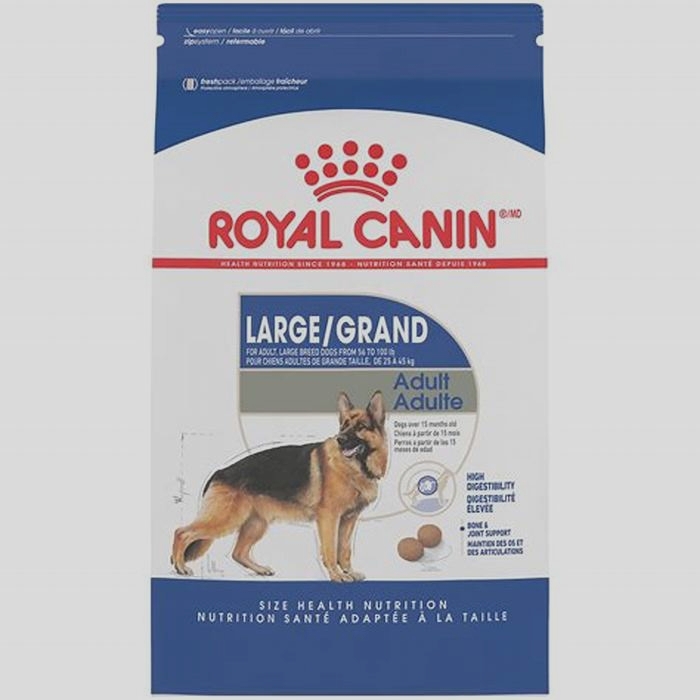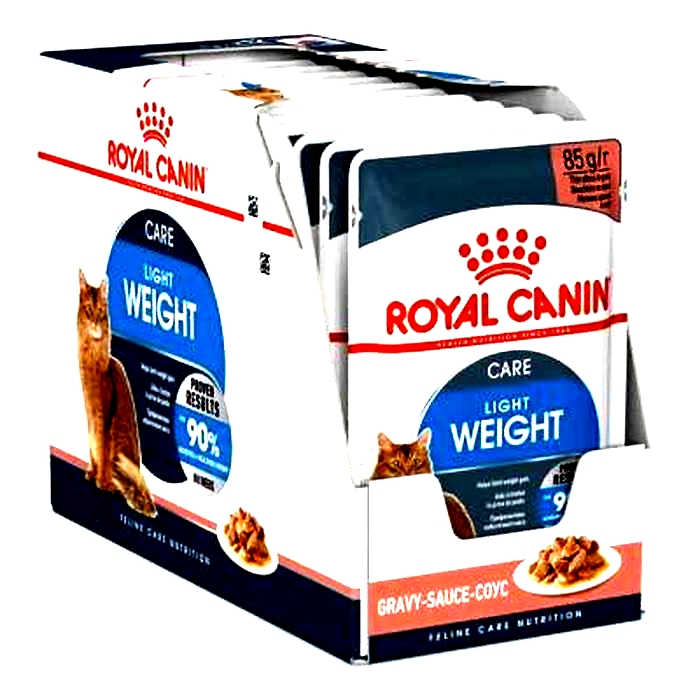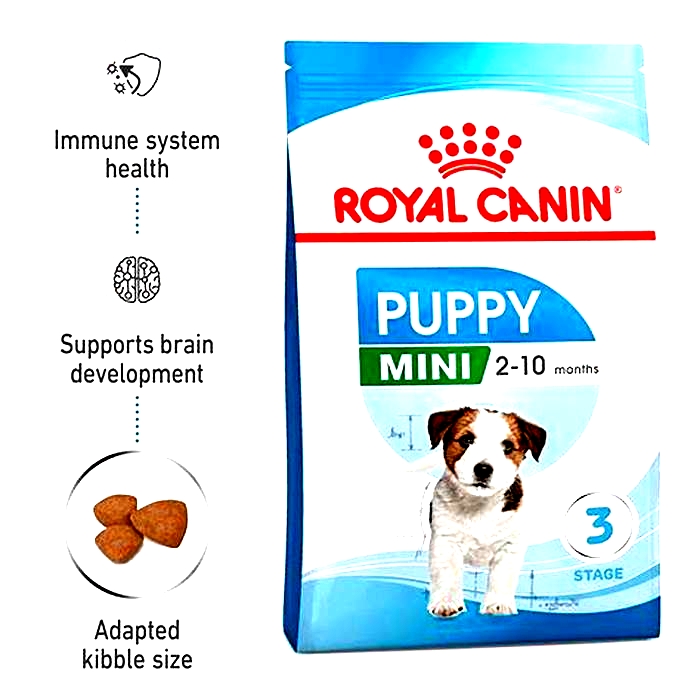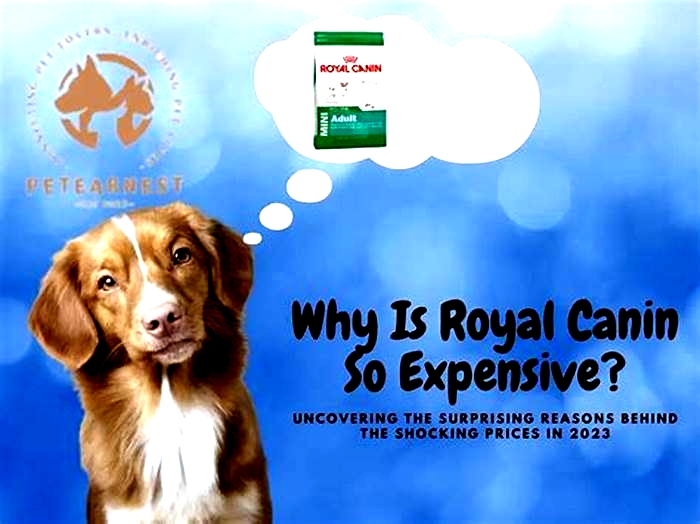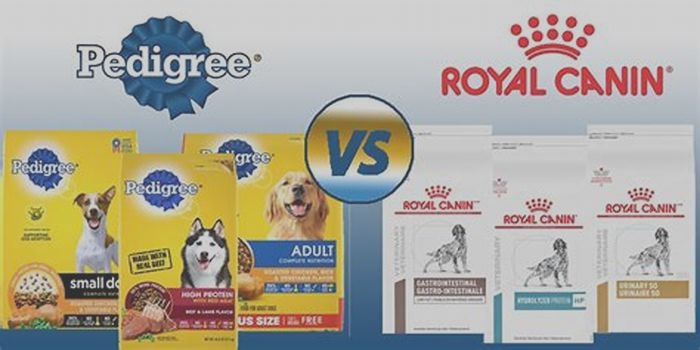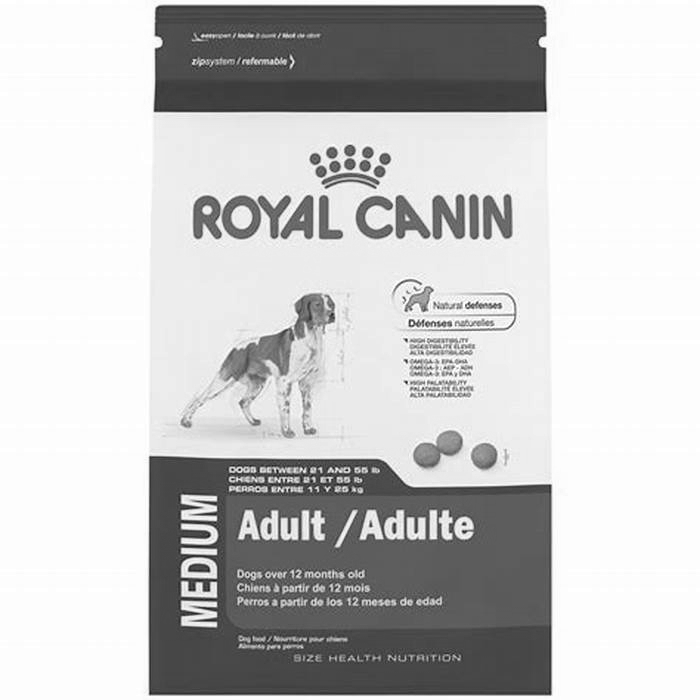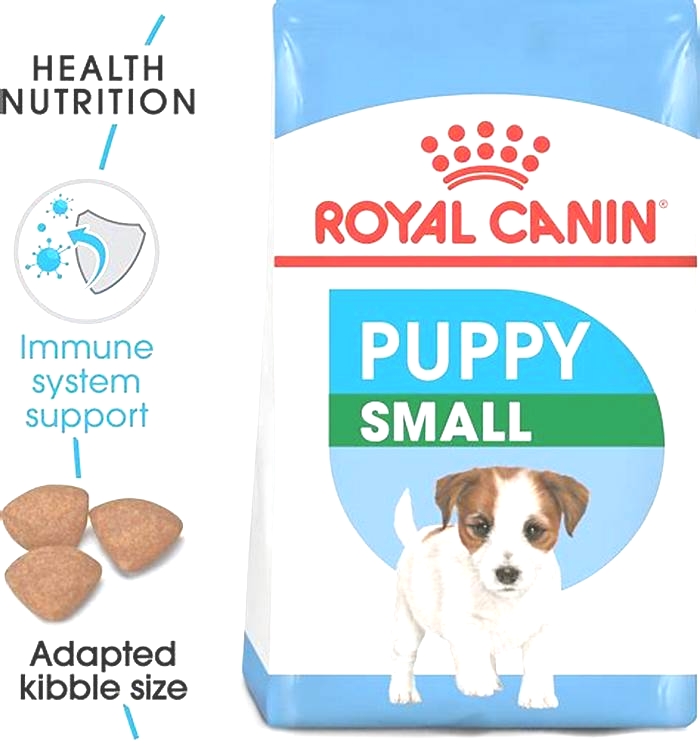Is Royal Canin better than other dog foods
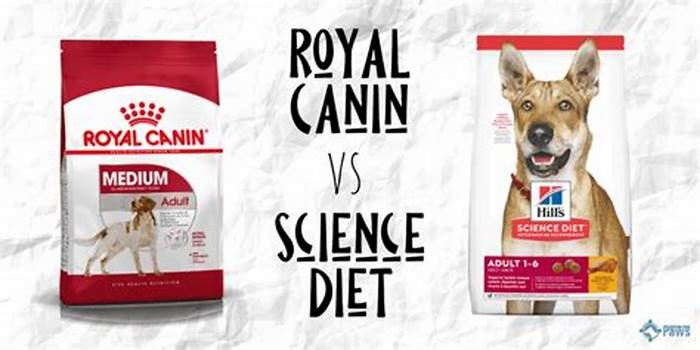
Your Guide to Dog Food Brands Comparable to Royal Canin
Hello, pet enthusiasts! Today, were diving deep into the world of dog nutrition, specifically zooming in on those of you whove been loyal to Royal Canin. Its a trusted brand, no doubt, but what if your furry friends diet needs a little shake-up?
Why Look Beyond Royal Canin?
Royal Canin has been a heavyweight in the pet nutrition ring, known for its breed-specific formulas and scientific approach to pet food. However, variety is the spice of life! Exploring alternatives can uncover new benefits for your dog, such as improved digestion, allergy relief, or simply a wagging tail at mealtime. Plus, its always a smart move to have a few options up your sleeve for different nutritional needs or budget constraints.
Top 10 Royal Canin Alternatives Chart
Lets break it down. Our experts have meticulously compared these brands based on nutritional value, ingredient quality, price point, and pooch satisfaction. Without further ado, heres the scoop:
| Brand Name | Key Features |
|---|---|
| Orijen | High-protein, grain-free, uses fresh & regional ingredients |
| Acana | Less expensive than Orijen, high-quality ingredients, grain-free options |
| Blue Buffalo | Wide variety, includes life-protection formula, grain-free options |
| Hills Science Diet | Veterinarian recommended, easily digestible, science-backed formulas |
| Purina Pro Plan | Offers specialized formulas, affordable, scientifically formulated |
| Wellness Core | Focus on natural ingredients, grain-free, high-protein diets |
| Taste of the Wild | Grain-free, uses real smoked meat, fish, or poultry, probiotics for digestive health |
| Merrick | Grain-free options, contains high levels of Omega-3 and Omega-6 |
| Canidae | Grain and grain-free options, uses whole foods for better digestibility |
| Eukanuba | Focus on high-quality animal protein, breed-specific formulas available |
What to Look For in a Dog Food Brand
When venturing beyond Royal Canin, keep these tips in mind to ensure youre choosing the best for your furry friend:
- Ingredient Quality: Look for brands that prioritize high-quality, whole-food ingredients with real meat as the first component.
- Nutritional Balance: Ensure the food meets the nutritional levels established by the AAFCO Dog Food Nutrient Profiles.
- Special Dietary Needs: Consider any specific health issues or dietary restrictions your dog may have, such as allergies or sensitivities.
- Budget: High-quality dog food can be pricey, but there are great options available at various price points.
- Taste Test: Ultimately, your dogs palate is the final judge. What matters most is that they enjoy and thrive on their diet.
Making the Switch: A Tail-Wagging Transition
Switching dog food brands isnt something to rush. To avoid digestive upset, gradually mix the new food with the old over a period of 7-10 days, increasing the amount of new food slowly. This will help your dog adjust both physically and taste-wise.
Conclusion: A Feast of Options
There you have it, dog lovers! Exploring dog food brands beyond Royal Canin doesnt just satisfy your curiosityit opens up a world of nutritional possibilities for your pup. Remember, every dog is unique, so what works for one may not work for another. Its all about finding that perfect match that keeps your dog healthy, happy, and ready to embark on many more adventures by your side. Lets delve deeper into the world of canine nutrition with an insightful interview that sheds light on what makes a great dog food brand stand out and how to tailor your furry friends diet to their specific needs. Weve invited Dr. Luna Barkley, a renowned veterinary nutritionist, to share her expertise with us.
Dr. Luna Barkley: Unleashing Nutritional Wisdom
Q: Dr. Barkley, when selecting a dog food brand, whats the most critical factor pet owners should consider?
A: The cornerstone of any dog food decision should always be nutritional adequacy. Its not just about the percentage of protein or fat but how well-rounded the formula is. A brand that goes beyond AAFCO (Association of American Feed Control Officials) standards by conducting feeding trials and investing in nutritional research usually offers superior quality. Look for transparency about their ingredients sources and the rationale behind their formula choices. Its a sign that the brand not only cares about meeting basic nutritional requirements but is dedicated to the well-being and longevity of pets.
Q: Many pet owners are drawn to grain-free diets due to concerns about allergies. Whats your take on this trend?
A: Its a nuanced topic. Grain-free diets were popularized based on the assumption that grains are common allergens, which isnt necessarily accurate. Most dogs are more likely to be allergic to proteins like beef or chicken than grains. However, grain-free options can be beneficial for specific dietary needs or preferences. The key is to ensure that the diet is balanced and doesnt rely heavily on legumes or potatoes, which have been linked to certain health issues. Always tailor the diet to the individual dog, considering their health, activity level, and any specific sensitivities.
Q: With so many brands emphasizing natural and human-grade ingredients, how can pet owners navigate these claims?
A: The marketing language around dog food can be incredibly persuasive but sometimes misleading. Natural is a broad term that isnt strictly regulated, so while it might indicate fewer artificial additives, it doesnt automatically mean the food is of higher nutritional value. As for human-grade, it suggests the ingredients are edible by human standards, which could imply higher quality control but not necessarily superior nutritional adequacy for dogs. I advise focusing on the comprehensive nutritional profile of the food and the credibility of the brand over catchy phrases. Reputable brands will have a veterinary nutritionist on staff or consult with one to formulate their diets.
Q: How important is it to choose a diet specific to a dogs breed, size, or life stage?
A: Tailoring your dogs diet to their specific physiological and life stage requirements can significantly impact their overall health. For example, large breed puppies require diets with specific calcium and phosphorus ratios to support healthy bone development and prevent growth abnormalities. Similarly, senior dogs may benefit from diets with higher levels of certain antioxidants and joint-supporting nutrients. Breed-specific formulas can be beneficial, particularly for breeds with unique dietary needs, but they arent always necessary. The focus should be on the individual dogs health status, activity level, and nutritional needs rather than a one-size-fits-all approach.
Q: Finally, whats one myth about dog nutrition you wish to debunk?
A: The idea that feeding dogs a homemade diet is inherently better than commercial diets. While homemade diets offer control over ingredients, without careful formulation, they can lead to nutritional imbalances or deficiencies. Its critical for pet owners who choose this route to consult with a veterinary nutritionist to ensure their dogs diet is balanced and meets all their nutritional needs. Commercial diets, especially those backed by solid research and formulated by experts, are designed to provide complete nutrition. Its about choosing the right option for your dog and your lifestyle, ensuring health and happiness for your furry friend.
HELP US PUT FOOD ON THE TABLE
Iams vs. Royal Canin

Iams vs. Royal Canin
In this comparison article for Iams vs Royal Canin, we'll highlight the key differences between these two pet food brands. To properly compare Iams and Royal Canin, we'll use up-to-date nutritional and price information.
There are many factors to consider when choosing the best pet food brand for your pet. Factors such as ingredient quality, guaranteed analysis, product safety, brand history, and cost are among the most important factors to consider.
Throughout this Royal Canin vs Iams comparison, we've utilized average data to make general comparisons. If you'd like to see individual product reviews, visit our Iams Review Page or Royal Canin Review Page.
Guaranteed Analysis: Royal Canin vs. Iams
According to AAFCO, all pet food labels must provide a guaranteed analysis of nutrient content. The analysis must provide guaranteed minimum percentages of crude protein and crude fat, and maximum percentages of crude fiber and moisture.
All percentages used in this comparison are averages reported on a dry matter basis.
Iams Dog Food vs. Royal Canin Dog Food
| Dry Dog Food | Iams | Royal Canin |
| Crude Protein | 27.6% | 27.8% |
| Crude Fat | 14.9% | 16.2% |
| Crude Fiber | 5.2% | 4.7% |
| Wet/Canned Dog Food | Iams | Royal Canin |
| Crude Protein | 40.9% | 36.8% |
| Crude Fat | 23.4% | 20.0% |
| Crude Fiber | 5.4% | 11.7% |
Crude Protein Comparison For Dog Food
Dogs require twenty-two amino acids to sustain life. Twelve of these amino acids are synthesized naturally, the remaining ten are consumed. Protein is the nutrient which provides some or all of these ten essential amino acids.
As you can see, Iams and Royal Canin guarantee a similar amount of crude protein. For wet dog foods, Iams provides more protein (about 4.05% more).
Crude Fat Comparison For Dog Food
Like protein, fats are an essential part of a dog's body. Fats are needed for the proper development and function of the canine body.
Iams and Royal Canin both provide roughly the same amount of crude fat. For wet dog foods, Iams typically provides a little more fat (about 3.32% more).
There is a relatively insignificant difference between the crude fiber content of the two brands. For wet dog foods, Royal Canin provides more fiber (about 6.29% more).
Iams Cat Food vs. Royal Canin Cat Food
| Dry Cat Food | Iams | Royal Canin |
| Crude Protein | 35.7% | 34.5% |
| Crude Fat | 15.9% | 15.7% |
| Crude Fiber | 4.6% | 6.9% |
| Wet/Canned Cat Food | Iams | Royal Canin |
| Crude Protein | 46.7% | 50.4% |
| Crude Fat | 21.8% | 12.8% |
| Crude Fiber | 4.9% | 10.5% |
Crude Protein Comparison For Cat Food
Cats require twenty-two amino acids to sustain life. Eleven of these amino acids are synthesized naturally, the remaining eleven are consumed. Protein is the nutrient which provides some or all of these eleven essential amino acids.
Both brands provide roughly the same amount of crude protein. For wet cat foods, Royal Canin typically provides a little more protein (about 3.76% more).
Crude Fat Comparison For Cat Food
There are many ways in which dietary fat contributes to the overall health of our feline friends. Here is a short list of benefits provided by fats (not exhaustive):
- Help transport nutrients across cell membranes
- Fats produce metabolites, which help control inflammation
- Maintain healthy blood pressure
- Slow the growth of yeast infections
- Fats improve the taste/texture of food.
If you look at the average percentages of crude fiber, you'll notice that Royal Canin typically guarantees 2.30% more fiber. This is a fairly small difference between Royal Canin and Iams, but still worth mentioning. In addition, Royal Canin wet cat foods also provide more fiber than Iams wet foods.
Iams Pet Food Ingredients vs. Royal Canin Pet Food Ingredients
Iams and Royal Canin both use the following controversial ingredients in many of their products:
CaramelCaramel is a widely used natural food colorant. The concentrated form of caramel is typically listed as caramel color and has been linked to cancer in laboratory animals. Since our pets do not care about food color, caramel is an unnecessary addition with possible health risks.
Corn MealCorn meal is another name for ground corn. Corn is a cereal grain which provides a modest amount of vitamins, minerals, and plant based protein. It also happens to be one of the most controversial ingredients in pet food.
Proponents of corn claim that corn is highly digestible and an excellent source of protein, energy, vitamins, minerals, and essential fatty acids.
Opponents however believe that positive claims in regards to corn are either half-truths or completely false, we'll discuss a few of the opposing arguments.
In regards to digestibility, the claims of "highly digestible" are only true if corn is processed into a meal or flour and subsequently cooked. In regards to the protein contribution, we must note that corn is a plant based protein which does not contain all of the necessary amino acids required by pets to sustain life. Therefore substituting corn for meat is an unsuitable substitution and actually degrades the overall protein quality of the product.
Finally, we'll discuss the claims about vitamins and minerals in corn. Although corn does provide many vitamins and minerals, it not necessarily an exceptional ingredient in this regards. There are many other ingredients which are more complete and biologically appropriate. Therefore the usage of corn as the primary ingredient in pet food should certainly warrant further questioning.
Corn GritsCorn grits are made from ground corn. Corn is a cereal grain which provides a modest amount of vitamins, minerals, and plant based protein. It also happens to be one of the most controversial ingredients in pet food.
Proponents of corn claim that corn is highly digestible and an excellent source of protein, energy, vitamins, minerals, and essential fatty acids.
Opponents however believe that positive claims in regards to corn are either half-truths or completely false, we'll discuss a few of the opposing arguments.
In regards to digestibility, the claims of "highly digestible" are only true if corn is processed into a meal or flour and subsequently cooked. In regards to the protein contribution, we must note that corn is a plant based protein which does not contain all of the necessary amino acids required by pets to sustain life. Therefore substituting corn for meat is an unsuitable substitution and actually degrades the overall protein quality of the product.
Finally, we'll discuss the claims about vitamins and minerals in corn. Although corn does provide many vitamins and minerals, it not necessarily an exceptional ingredient in this regards. There are many other ingredients which are more complete and biologically appropriate. Therefore the usage of corn as the primary ingredient in pet food should certainly warrant further questioning.
Pea ProteinPea protein is produced by removing the starchy parts of peas. Pea protein is considered controversial because it provides a substantial plant based protein boost. This boost is undesirable because plant based protein is typically lower in biological value when compared to meat based proteins.
Brewers RiceBrewer's rice is the small fragments of rice kernel that are separated from the larger kernels of milled rice. The fragments do not contain the same nutrition profile of the whole kernel and therefore brewer's rice is a lower quality grain. Brewer's rice is typically regarded as an inexpensive and low quality filler.
Wheat GlutenWheat gluten is the main protein of wheat. Although wheat gluten is mostly protein, wheat gluten is considered controversial because it significantly boosts the protein content of the product. This is undesirable because plant based protein does not provide the same amino acid profile as meat based protein.
Vegetable OilSpecific vegetable oils are typically positive ingredients; however, this ingredient does not specify which vegetable(s) were used to produce the oil.
Without this information, it is impossible for us to make any specific statements. With any fat source, it is important to know the omega-3 to omega-6 fatty acid ratio, a property which cannot be determined with this ingredient. Thus, we have marked vegetable oil as a controversial ingredient.
Corn Gluten MealCorn gluten meal is a by-product from the production of various corn products (corn starch, corn syrup, etc). It's very high in protein (nearly 60% protein) and therefore can significant boost the protein content of the product. Because plant based proteins such as corn gluten meal are inferior to meat based proteins (lack many essential amino acids), they are not suitable substitutes.
Powdered CellulosePowdered cellulose is produced from minuscule pieces of wood pulp and plant fibers. Other than its fiber content, powdered cellulose lacks any nutritional contribution.
Chicken By-ProductsBy-products are defined by AAFCO as the "non-rendered, clean parts, other than meat, derived from slaughtered mammals." Thus, chicken by-products contain nearly all parts of the chicken which are typically not consumed by humans. These parts include the liver, lung, spleen, kidney, stomach, blood, intestine, bone, etc.
Like other meat by-products, chicken by-products are considered controversial, mainly because they are inexpensive ingredients which consumers have equated with slaughterhouse waste. However, manufactures and many experts claim that animal by-products are unjustly criticized. Proponents state that "named" by-products, such as chicken by-products, supply many important nutrients required by pets.
Dried Tomato PomaceDried tomato pomace is a by-product of tomato manufacturing. It's considered a controversial ingredient because many people believe it is an inexpensive low quality filler. However, tomato pomace provides a notable amount of dietary fiber, B vitamins, Lycopene, and vitamin A. Although it is a very inexpensive ingredient, it is not nutritionally empty.
Chicken By-Product MealChicken by-product meal is produced by cooking chicken by-products using a process called rendering. By-products are defined by AAFCO as the "non-rendered, clean parts, other than meat, derived from slaughtered mammals." Thus, chicken by-products contain nearly all parts of chickens which are typically not consumed by humans. These parts include the liver, lung, spleen, kidney, stomach, blood, intestine, bone, etc.
Like other meat by-products, chicken by-products are considered controversial, mainly because they are inexpensive ingredients which consumers have equated with slaughterhouse waste. However, manufactures and many experts claim that animal by-products are unjustly criticized. Proponents state that "named" by-products, such as chicken by-products, supply many important nutrients required by pets.
Here are some of the controversial ingredients used only by Iams.
LiverLiver is a controversial ingredient because the source animal is not specified. Anonymous animal ingredients are typically very low quality and may contain almost any animal, including dogs and cats!
Beet PulpBeet pulp is the by-product which remains once sugar has been extracted from sugar beets. The primary contribution of beet pulp is dietary fiber.
We'd also like to note that beet pulp is fairly controversial in pet food. Proponents claim that beet pulp can promote intestinal health and regulate blood sugar. However, opponents claim that beet pulp is an inexpensive filler.
Canola OilCanola oil is a plant-derived oil from the seeds of canola plants. Although fat is an essential component of any diet, canola oil is controversial in pet food. Proponents claim that canola oil provides a better fat profile in comparison to other plant based oils. However, opponents claim that canola oil is typically produced with genetically modified rapeseed and that rapeseed oil has multiple adverse health affects.
Iron OxideIron oxide is an FDA approved natural food coloring agent. It's commonly found in rusting metal and provides a reddish-brown color.
We believe food colorants are unnecessary ingredients in pet food. Other than potential harm, food colorants do not provide any nutritional value. These type of ingredients are used only to make the food look appealing to humans.
Fish DigestFish digest is the result of undecomposed fish tissue after hydrolysis, a chemical reaction. It is typically used as flavoring to improve taste. Fish digest is considered by many as an undesirable low-quality ingredient.
Ground CornGround corn is a cereal grain which provides a modest amount of vitamins, minerals, and plant based protein. It also happens to be one of the most controversial ingredients in pet food.
Proponents of corn claim that corn is highly digestible and an excellent source of protein, energy, vitamins, minerals, and essential fatty acids.
Opponents however believe that positive claims in regards to corn are either half-truths or completely false, we'll discuss a few of the opposing arguments.
In regards to digestibility, the claims of "highly digestible" are only true if corn is processed into a meal or flour and subsequently cooked. In regards to the protein contribution, we must note that corn is a plant based protein which does not contain all of the necessary amino acids required by pets to sustain life. Therefore substituting corn for meat is an unsuitable substitution and actually degrades the overall protein quality of the product.
Finally, we'll discuss the claims about vitamins and minerals in corn. Although corn does provide many vitamins and minerals, it not necessarily an exceptional ingredient in this regards. There are many other ingredients which are more complete and biologically appropriate. Therefore the usage of corn as the primary ingredient in pet food should certainly warrant further questioning.
Caramel ColorCaramel color is a concentrated form of caramel, a natural food colorant. Caramel color has been linked to cancer in laboratory animals. Since our pets do not care about food color, caramel color is an unnecessary addition with possible health risks.
Feeding OatmealAccording to AAFCO, feeding oatmeal "is obtained in the manufacture of rolled oat groats or rolled oats". It contains "broken oat groats, oat groat chips, and floury portions of the oat groats." In other words, feeding oatmeal is an inexpensive by-products of rolled oat processing.
Poultry GibletsPoultry giblets includes the heart, liver, gizzards, and other internal organs of poultry. Organs are nutritiously dense ingredients which provide high quality protein and fat. However, this particular ingredient is considered an anonymous meat ingredient because the type of poultry is not specified. In order words, "named" giblets such as chicken giblets or turkey giblets are preferred over poultry giblets.
Meat By-ProductsBy-products are defined by AAFCO as the "non-rendered, clean parts, other than meat, derived from slaughtered mammals." Thus, meat by-products contain nearly all parts of the animal which are typically not consumed by humans. These parts include the liver, lung, spleen, kidney, stomach, blood, intestine, bone, etc.
This ingredient is marked controversial because the meat source is not identified. Anonymous ingredients such as meat by-products are typically very low quality additions. The most unpleasing property of this ingredient is that the animal source can contain any mammal, even dogs & cats.
Dried Meat By-ProductsBy-products are defined by AAFCO as the "non-rendered, clean parts, other than meat, derived from slaughtered mammals." Thus, dried meat by-products contain nearly all parts of the animal which are typically not consumed by humans. These parts include the liver, lung, spleen, kidney, stomach, blood, intestine, bone, etc.
This ingredient is marked controversial because the meat source is not identified. Anonymous ingredients such as dried meat by-products are typically very low quality additions. The most unpleasing property of this ingredient is that the animal source can contain any mammal, even dogs & cats.
Ground Whole Grain CornGround whole grain corn contains the entire corn kernel (the germ, bran, and endosperm). Corn is a cereal grain which provides a modest amount of vitamins, minerals, and plant based protein. It also happens to be one of the most controversial ingredients in pet food.
Proponents of corn claim that corn is highly digestible and an excellent source of protein, energy, vitamins, minerals, and essential fatty acids.
Opponents however believe that positive claims in regards to corn are either half-truths or completely false, we'll discuss a few of the opposing arguments.
In regards to digestibility, the claims of "highly digestible" are only true if corn is processed into a meal or flour and subsequently cooked. In regards to the protein contribution, we must note that corn is a plant based protein which does not contain all of the necessary amino acids required by pets to sustain life. Therefore substituting corn for meat is an unsuitable substitution and actually degrades the overall protein quality of the product.
Finally, we'll discuss the claims about vitamins and minerals in corn. Although corn does provide many vitamins and minerals, it not necessarily an exceptional ingredient in this regards. There are many other ingredients which are more complete and biologically appropriate. Therefore the usage of corn as the primary ingredient in pet food should certainly warrant further questioning.
Poultry By-Product MealPoultry by-product meal is a controversial ingredient because the source animal is not specified. Anonymous ingredients such as poultry by-product meal are typically low-quality ingredients in comparison to named protein by-product meals (e.g. chicken by-product meal, turkey by-product meal, duck by-product meal).
Animal Fat (Preserved With Mixed Tocopherols)Animal fat is a by-product of tissue rendering. The source animal is not specific and therefore we cannot be certain that the source does not include diseased animals or even euthanized dogs and cats.
Poultry Fat (Preserved With Mixed Tocopherols)Poultry fat is a by-product of poultry tissue rendering. Poultry fat is a controversial ingredient because the specific protein is not specified. Such ingredients are typically low-quality in comparison to named poultry fats (e.g. chicken fat, turkey fat).
Here are some of the controversial ingredients used only by Royal Canin.
CornCorn is a cereal grain which provides a modest amount of vitamins, minerals, and plant based protein. It also happens to be one of the most controversial ingredients in pet food.
Proponents of corn claim that corn is highly digestible and an excellent source of protein, energy, vitamins, minerals, and essential fatty acids.
Opponents however believe that positive claims in regards to corn are either half-truths or completely false, we'll discuss a few of the opposing arguments.
In regards to digestibility, the claims of "highly digestible" are only true if corn is processed into a meal or flour and subsequently cooked. In regards to the protein contribution, we must note that corn is a plant based protein which does not contain all of the necessary amino acids required by pets to sustain life. Therefore substituting corn for meat is an unsuitable substitution and actually degrades the overall protein quality of the product.
Finally, we'll discuss the claims about vitamins and minerals in corn. Although corn does provide many vitamins and minerals, it not necessarily an exceptional ingredient in this regards. There are many other ingredients which are more complete and biologically appropriate. Therefore the usage of corn as the primary ingredient in pet food should certainly warrant further questioning.
WheatWheat is regarded as an inexpensive and low-quality filler in pet food. However, wheat does provide plant-based protein and makes pet food more affordable for consumers. It's important to note that plant based protein does not provide the same amino acid profile as meat based protein.
Corn FlourCorn flour a ground cereal grain which provides a modest amount of vitamins, minerals, and plant based protein. It also happens to be one of the most controversial ingredients in pet food.
Proponents of corn claim that corn is highly digestible and an excellent source of protein, energy, vitamins, minerals, and essential fatty acids.
Opponents however believe that positive claims in regards to corn are either half-truths or completely false, we'll discuss a few of the opposing arguments.
In regards to digestibility, the claims of "highly digestible" are only true if corn is processed into a meal or flour and subsequently cooked. In regards to the protein contribution, we must note that corn is a plant based protein which does not contain all of the necessary amino acids required by pets to sustain life. Therefore substituting corn for meat is an unsuitable substitution and actually degrades the overall protein quality of the product.
Finally, we'll discuss the claims about vitamins and minerals in corn. Although corn does provide many vitamins and minerals, it not necessarily an exceptional ingredient in this regards. There are many other ingredients which are more complete and biologically appropriate. Therefore the usage of corn as the primary ingredient in pet food should certainly warrant further questioning.
Corn SyrupCorn syrup is made from corn starch and it's typically used as a thickener, sweetener, and humectant (keeps the product moist). It's considered controversial because it can raise a pet's blood sugar to unhealthy levels. Of course this concern may be nullified if the syrup is used in very small quantities.
Rice HullsRice hulls, also called rice husks, are the outer layer of grains of rice. This ingredient is regarded as an inexpensive and low quality by-product. Rice hulls are high in fiber and mostly serve as fillers in pet food.
Beef PlasmaBeef plasma is the colorless fluid part of a cow's blood. It may sound disgusting, but it's actually very nutritious for pets. Regardless of the nutritional aspects, consumers are shocked by this ingredient, which is why beef plasma is considered a controversial ingredient.
Canola MealCanola meal is a high protein by-product of canola oil production. This ingredient is marked controversial because it may be derived from genetically modified rapeseed, which is associated with multiple adverse health affects.
Pork PlasmaPork plasma is the colorless fluid part of a pig's blood. It may sound disgusting, but it's actually very nutritious for pets. Regardless of the nutritional aspects, consumers are shocked by this ingredient, which is why pork plasma is considered a controversial ingredient.
Tomato PomaceTomato pomace is a by-product of tomato manufacturing. It's considered a controversial ingredient because many people believe it is an inexpensive low quality filler. However, tomato pomace provides a notable amount of dietary fiber, B vitamins, Lycopene, and vitamin A. Although it is a very inexpensive ingredient, it is not nutritionally empty.
Propyl GallatePropyl gallate is an artificial preservative with possible links to xenoestrogens, a hormone-like compound which can cause reproductive health issues.
Pork By-ProductsBy-products are defined by AAFCO as the "non-rendered, clean parts, other than meat, derived from slaughtered mammals." Thus, pork by-products contain nearly all parts of pork which are typically not consumed by humans. These parts include the liver, lung, spleen, kidney, stomach, blood, intestine, bone, etc.
Like other meat by-products, pork by-products are considered controversial, mainly because they are inexpensive ingredients which consumers have equated with slaughterhouse waste. However, manufactures and many experts claim that animal by-products are unjustly criticized. Proponents state that "named" by-products, such as pork by-products, supply many important nutrients required by pets.
Brewers Rice FlourBrewer's rice flour is powdered brewer's rice. Brewer's rice is the small fragments of rice kernel that are separated from the larger kernels of milled rice. It's important to note that brewer's rice does not contain the same nutrition profile as regular whole grain rice. Thus, brewer's rice is typically regarded as an inexpensive and low quality filler.
Venison By-ProductsBy-products are defined by AAFCO as the "non-rendered, clean parts, other than meat, derived from slaughtered mammals." Thus, venison by-products contain nearly all parts of venison which are typically not consumed by humans. These parts include the liver, lung, spleen, kidney, stomach, blood, intestine, bone, etc.
Like other meat by-products, venison by-products are considered controversial, mainly because they are inexpensive ingredients which consumers have equated with slaughterhouse waste. However, manufactures and many experts claim that animal by-products are unjustly criticized. Proponents say that "named" by-products, such as venison by-products, supply many important nutrients required by pets.
Duck By-Product MealDuck by-product meal is produced by cooking duck by-products using a process called rendering. By-products are defined by AAFCO as the "non-rendered, clean parts, other than meat, derived from slaughtered mammals." Thus, duck by-products contain nearly all parts of ducks which are typically not consumed by humans. These parts include the liver, lung, spleen, kidney, stomach, blood, intestine, bone, etc.
Like other meat by-products, duck by-products are considered controversial, mainly because they are inexpensive ingredients which consumers have equated with slaughterhouse waste. However, manufactures and many experts claim that animal by-products are unjustly criticized. Proponents state that "named" by-products, such as duck by-products, supply many important nutrients required by pets.
Soybean Protein IsolateSoy protein isolate is a highly refined/purified form of soy bean protein. Roughly 90% of soy protein isolate is protein. The inclusion of non-meat protein typically degrades the overall quality of protein in the recipe. This degradation is due to the inferior amino acid profile of plant based proteins.
Hydrolyzed Poultry By-Products AggregateHydrolyzed poultry by-products aggregate is basically highly processed "feather meal." The source is subjected to a process called hydrolysis. In this process, the protein source is broken down to the amino acid level. This is done to increase the digestibility of the protein.
We believe that certain pet food ingredients are linked to adverse health affects; these ingredients are classified as harmful.
Iams and Royal Canin both use the following harmful ingredients in many of their products:
Menadione Sodium Bisulfite ComplexMenadione sodium bisulfite complex is a synthetic version of vitamin K that has been linked to many health concerns. Research has suggested possible toxic reactions in liver cells and red blood cells among other serious problems. In fact, one large chemical supplier warns, "The substance is toxic to kidneys, lungs, liver, mucous membranes. Repeated or prolonged exposure to the substance can produce target organs damage."
Here are some of the harmful ingredients used only by Iams.
Blue 2Blue 2 is an artificial dye which can increase the likelihood of tumors according to the Center for Science in the Public Interest. Like other dyes, blue 2 does not provide any nutritional value.
Red 40Red 40 is the most widely used artificial dye in consumer goods. Studies have shown that red 40 may accelerate the appearance of immune-system tumors in mice, cause allergy-like reactions and trigger hyperactivity in children.
Yellow 5Yellow 5 is an artificial dye which may be contaminated with several cancer-causing chemicals. Like other dyes, yellow 5 does not provide any nutritional value.
Yellow 6Yellow 6 is an artificial food dye which may be contaminated with cancer-causing chemicals. According to the Center For Science In The Public Interest, yellow 6 can cause adrenal tumors in animals.
Added ColorThe ingredient "added color" is ambiguous and may include various artificial dyes. Most artificial dyes have been linked to various chronic diseases.
Here are some of the harmful ingredients used only by Royal Canin.
BhaButylated hydroxyanisole (BHA) is an artificial preservative and possible cancer-causing agent. Studies have show that BHA can be linked to various tumors in laboratory animals.
Product Safety: Recall History of Iams & Royal Canin?
Iams has been recalled 2 times.
- Aug. 14, 2013: Salmonella
- July 30, 2010: Salmonella
Royal Canin has been recalled 3 times.
- May 11, 2007: Melamine
- April 19, 2007: Melamine
- Feb. 2, 2006: excess level of vitamin D3
Price Comparison: Which Brand Is More Expensive?
| Dry Dog Food | Iams | Royal Canin |
| Per Pound | $1.52 | $7.31 |
| Per Calorie | $0.0009 | $0.0043 |
| Dry Cat Food | Iams | Royal Canin |
| Per Pound | $2.03 | $9.93 |
| Per Calorie | $0.0012 | $0.0059 |
| Wet Dog Food | Iams | Royal Canin |
| Per Pound | $1.90 | $6.33 |
| Per Calorie | $0.0038 | $0.0144 |
| Wet Cat Food | Iams | Royal Canin |
| Per Pound | $6.97 | $12.71 |
| Per Calorie | $0.0151 | $0.0354 |
The average cost-per-lb is heavily influenced by the varying amounts of moisture present in each brand's food products (wet vs. dry food, dry vs. freeze-dried food, etc). However, the average cost-per-kcal eliminates the influence of moisture. Therefore, the average cost-per-kcal is the better metric to consider.
If you'd like to calculate the average cost-per-day or cost-pet-year of feeding Iams or Royal Canin, input your pet's weight into our cost analyzer widget.
Averages price data can identify whether or not there exists a significant price difference between two brands. However, the actual price that you'll pay for Iams or Royal Canin will depend on your shopping habits.
Pet owners who use our price comparison feature typically save more than 25% off retail prices for Iams and Royal Canin. In addition, we currently have some great coupons for our readers.
Disclosure: PawDiet has an affiliate relationship with stores featured (or linked-to) in this article. We are compensated for referring customers. Thank you for shopping with our retail partners!
Where To Buy Iams Pet Foods
You can purchase Iams pet foods from the following stores:
33 Recipes In-Stock Today
15 Recipes In-Stock Today
24 Recipes In-Stock Today
Where To Buy Royal Canin Pet Foods
You can purchase Royal Canin pet food products from these retailers:
81 Recipes In-Stock Today
46 Recipes In-Stock Today
78 Recipes In-Stock Today
Type Of Pet Foods Available
| Product | Iams | Royal Canin |
| Dry Dog Food | 24 Recipes | 89 Recipes |
| Wet Dog Food | 8 Recipes | 50 Recipes |
| Dog Treats | None | 2 Treats |
| Dry Cat Food | 13 Recipes | 31 Recipes |
| Wet Cat Food | 13 Recipes | 31 Recipes |
| Cat Treats | 2 Treats | 1 Treats |
Top Rated Iams Recipes
Dog Food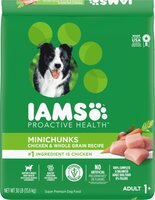
IamsMinichunks Chicken & Whole Grains Recipe
Check PriceDog Food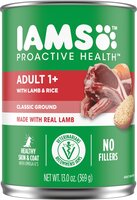
IamsProactive Health Pate With Lamb and Rice
Check PriceCat Food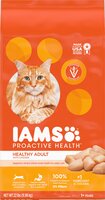
IamsProactive Health Healthy Adult With Chicken
Check PriceCat Food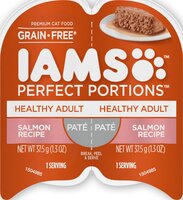
IamsPerfect Portions Salmon Recipe Pate For Healthy Adult Cats
Check PriceTop Rated Royal Canin Recipes
Dog Food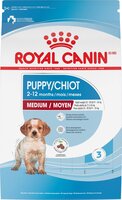
Royal CaninSize Health Nutrition Medium Puppy
Check PriceDog Food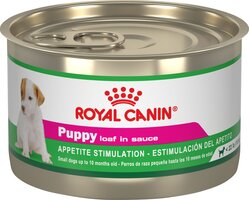
Royal CaninCanine Health Nutrition Puppy Appetite Stimulation
Check PriceCat Food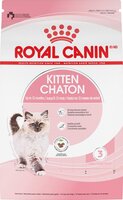
Royal CaninFeline Health Nutrition Kitten
Check PriceCat Food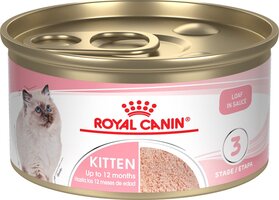
Royal CaninFeline Health Nutrition Kitten Loaf In Sauce
Check Price
